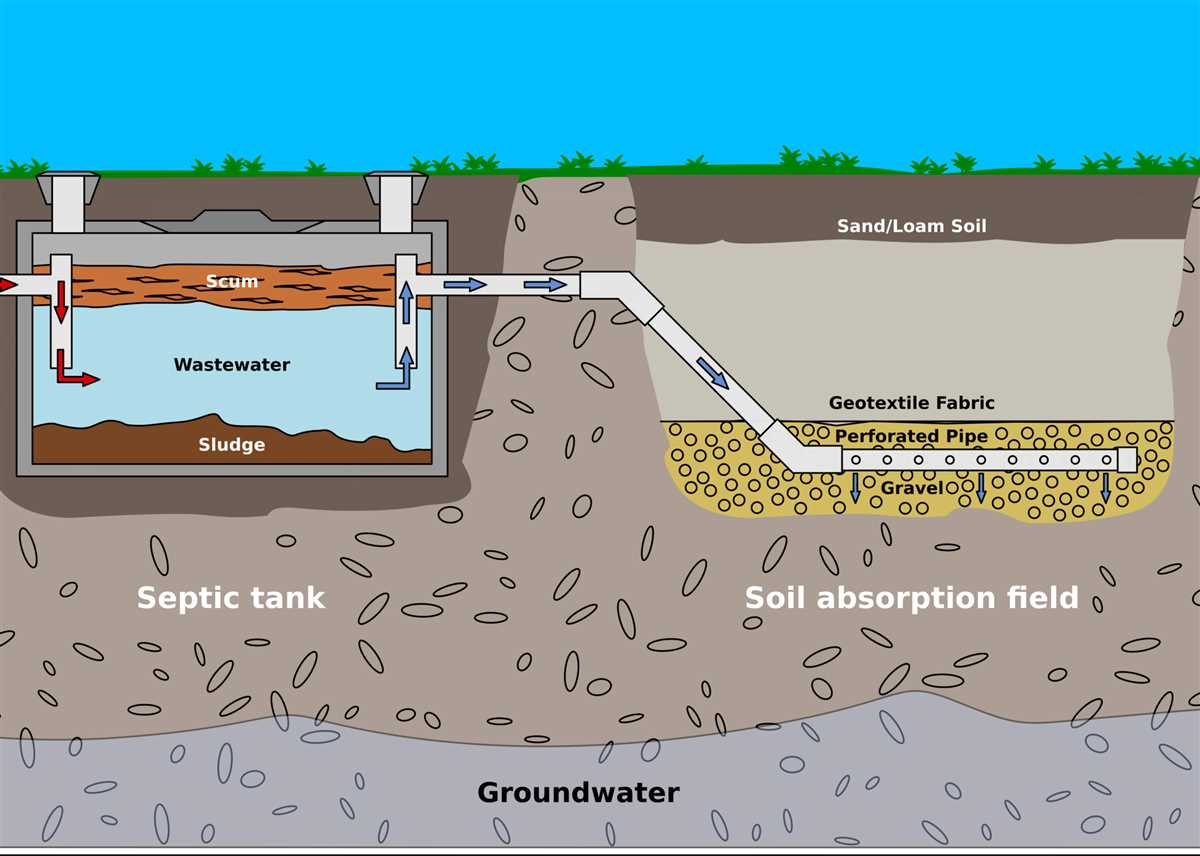
A septic tank is a crucial component of a septic system, a common wastewater treatment method used in rural areas and homes not connected to a centralized sewer system. Understanding the inner workings of a septic tank is essential for homeowners and professionals involved in septic system maintenance and installation. A septic tank schematic diagram provides a visual representation of the various components and processes involved in the treatment of wastewater.
The septic tank schematic diagram typically includes the inlet pipe, outlet pipe, baffles, and the location of the drain field. The diagram illustrates how wastewater flows from the house into the septic tank through the inlet pipe. Inside the tank, solid waste settles at the bottom, while oils and greases float to the top. The remaining liquid, known as effluent, flows out of the tank through the outlet pipe.
Baffles, which are partitions inside the septic tank, help to prevent the solid waste and floating scum from exiting the tank. They create a separation between the inlet and outlet pipes, ensuring that only the effluent is discharged into the drain field. The drain field, also depicted in the septic tank schematic diagram, consists of a series of perforated pipes buried underground. The effluent disperses through these pipes into the soil, where it undergoes further treatment and purification.
By studying a septic tank schematic diagram, homeowners and professionals can gain insights into the important processes that occur within the septic tank. This knowledge can help guide proper maintenance and troubleshooting, ensuring the efficient functioning of the septic system and preventing potential issues such as backups and groundwater contamination. Understanding the inner workings of a septic tank is a valuable step towards maintaining a healthy and functional septic system.
Septic Tank Schematic Diagram: An Overview of the System
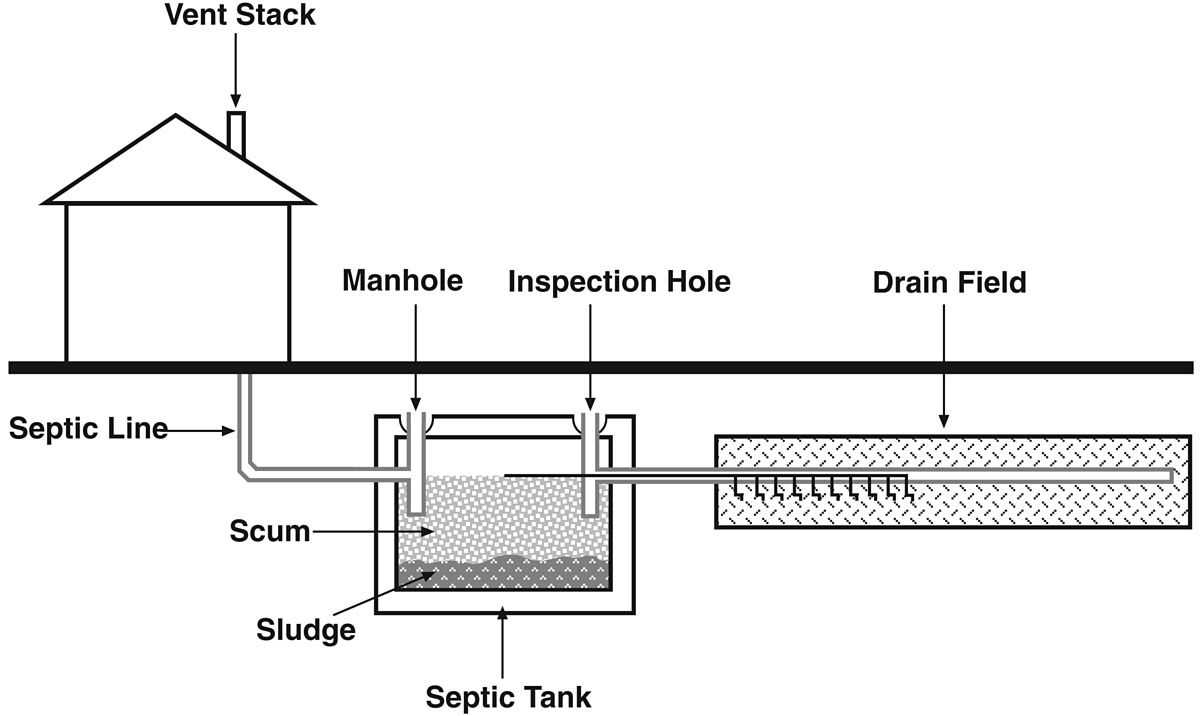
A septic tank schematic diagram provides an overview of the system used for the treatment and disposal of wastewater in areas without access to a centralized sewer system. This diagram outlines the different components and their functions, allowing homeowners and professionals to understand how the septic tank system works.
The septic tank is the main component of the system, and it is typically made of concrete, fiberglass, or plastic. It is buried underground and receives all the wastewater from the household, including water from toilets, sinks, showers, and washing machines. The septic tank serves as a holding tank where the solid waste settles at the bottom, forming sludge, while the lighter scum floats to the top. The liquid effluent, which is relatively clearer, stays in the middle layer.
The septic tank schematic diagram illustrates the inlet and outlet pipes that connect the septic tank to the house and the drain field, respectively. The inlet pipe allows wastewater from the house to enter the septic tank, while the outlet pipe carries the treated effluent out of the tank and into the drain field for further treatment and disposal.
Another important component shown in the septic tank schematic diagram is the drain field, also known as the leach field or absorption field. The drain field is a network of perforated pipes or chambers buried in the ground, typically surrounded by gravel or other porous materials. Its main function is to distribute the treated effluent from the septic tank into the soil, where further filtration and purification occur.
The septic tank schematic diagram may also include other components such as a distribution box, which evenly distributes effluent to different sections of the drain field, and a baffle, which helps trap solids in the septic tank and prevent them from entering the drain field. Additionally, some septic systems may include a pump or an aerator to enhance the treatment process.
Understanding the septic tank schematic diagram is crucial for homeowners and professionals involved in the installation, maintenance, and repair of septic systems. By having a clear picture of the system’s components and their functions, individuals can ensure the proper functioning and longevity of their septic tank system.
Understanding Septic Tanks
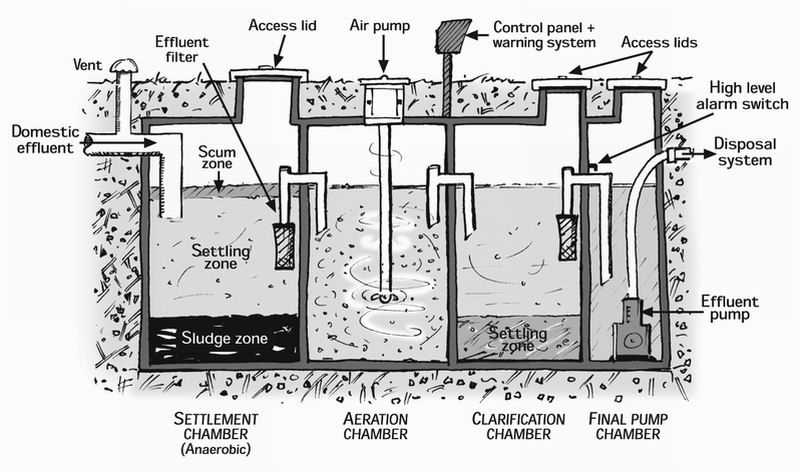
A septic tank is an essential component of a sewage system for rural and suburban homes that are not connected to a centralized sewer system. It serves as a primary treatment facility for household wastewater, separating solid waste from the liquid effluent. Understanding how septic tanks work and their components is crucial for proper maintenance and preventing system failures.
A typical septic tank schematic diagram consists of several key elements. The inlet pipe allows wastewater from the house to flow into the tank, while the outlet pipe allows treated effluent to leave the tank and be distributed into the drainfield. The tank itself is a watertight container made of concrete, fiberglass, or plastic. It is divided into two chambers by a baffle or wall, with the first chamber receiving wastewater and the second chamber holding partially treated effluent before it exits the tank.
The functioning of a septic tank relies on a series of biological and physical processes. When wastewater enters the tank, the solid waste settles at the bottom, forming a layer of sludge. Bacteria and other microorganisms in the tank break down the organic solids, converting them into liquid and gas. The liquid effluent then rises to the top, where it is discharged through the outlet pipe into the drainfield for further treatment in the soil.
Proper maintenance of septic tanks is essential for their longevity and effectiveness.

- Regular pumping of the tank is necessary to remove accumulated sludge and prevent it from clogging pipes or overflowing into the drainfield.
- Avoiding the disposal of non-biodegradable items, such as diapers and plastic, is crucial to prevent blockages and damage to the tank.
- Using septic tank-friendly products, such as biodegradable soaps and cleaners, helps maintain a healthy balance of bacteria in the tank.
- Regular inspections and maintenance by professionals ensure early detection of any issues and prevent major septic system failures.
In conclusion, understanding the functioning and maintenance requirements of septic tanks is vital for homeowners with these systems. By following proper maintenance practices and adopting responsible wastewater management, septic tanks can efficiently treat household wastewater and protect the environment. Regular inspections and maintenance by professionals are crucial for identifying and resolving any potential issues before they result in costly repairs or replacements.
Components of a Septic Tank System
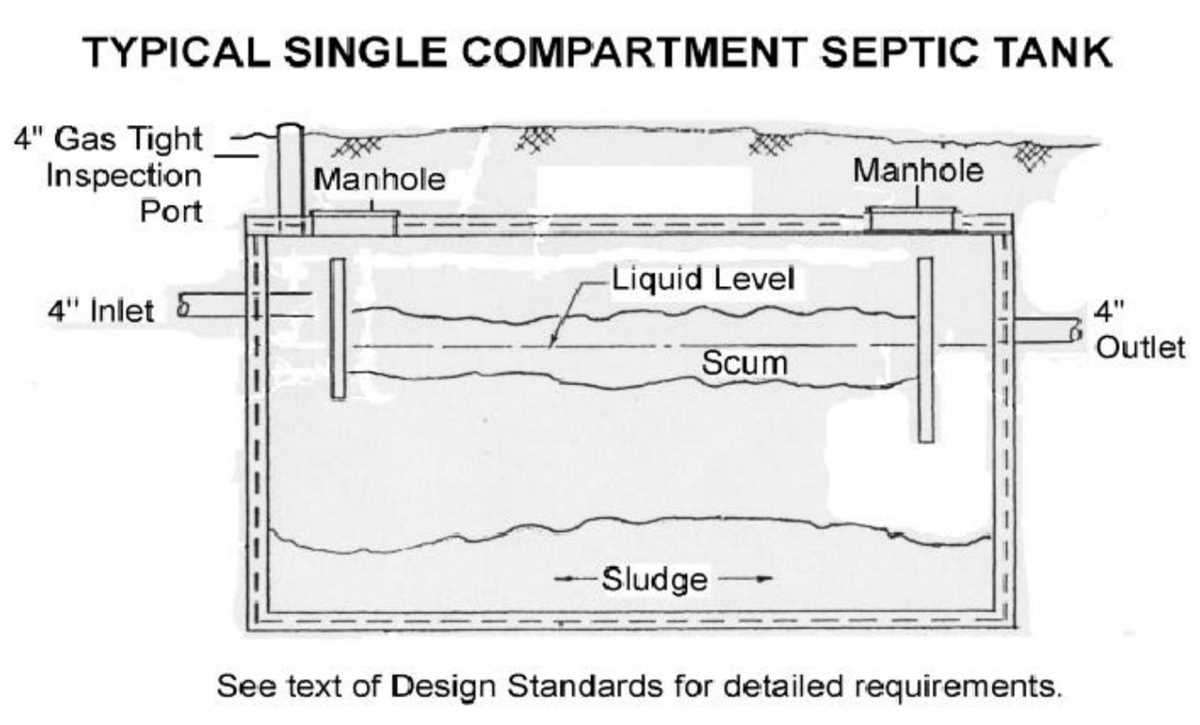
A septic tank system is an underground wastewater treatment system commonly used in rural areas and homes without access to a centralized sewer system. It consists of several components that work together to effectively treat and dispose of household wastewater. Understanding the different parts of a septic tank system can help homeowners maintain their system and prevent avoidable issues.
Septic Tank
The septic tank is the main component of the system and is typically made of fiberglass, concrete, or plastic. It is a large, watertight container buried underground and is responsible for holding and treating the wastewater. When wastewater enters the septic tank, it undergoes a process of separation, with solid waste sinking to the bottom as sludge and oils and fats rising to the top as scum. The middle layer, called effluent, is then discharged into the drainfield for further treatment.
Inlet and Outlet Pipes
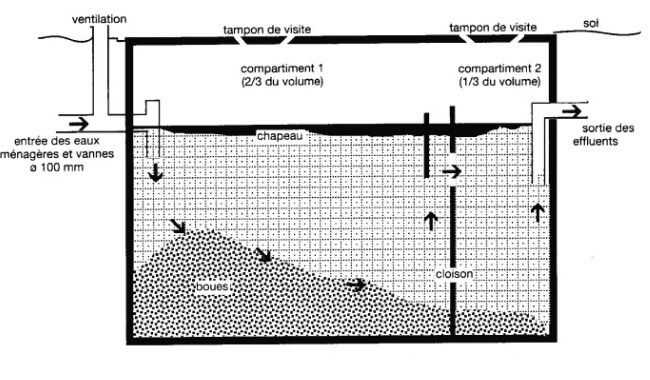
The septic tank has inlet and outlet pipes that allow wastewater to enter and exit the tank. The inlet pipe directs wastewater from the household plumbing system into the septic tank, while the outlet pipe transports treated effluent from the septic tank to the drainfield. It is crucial to ensure these pipes are properly installed and maintained to prevent blockages and backups.
Distribution Box
The distribution box, also known as a D-box, is a crucial component that evenly distributes effluent from the septic tank to the drainfield. It is typically a concrete or plastic box with multiple outlets and serves as a junction between the septic tank and the drainfield pipes. The distribution box ensures that effluent is evenly distributed throughout the drainfield, promoting efficient treatment and preventing clogging in any specific area.
Drainfield
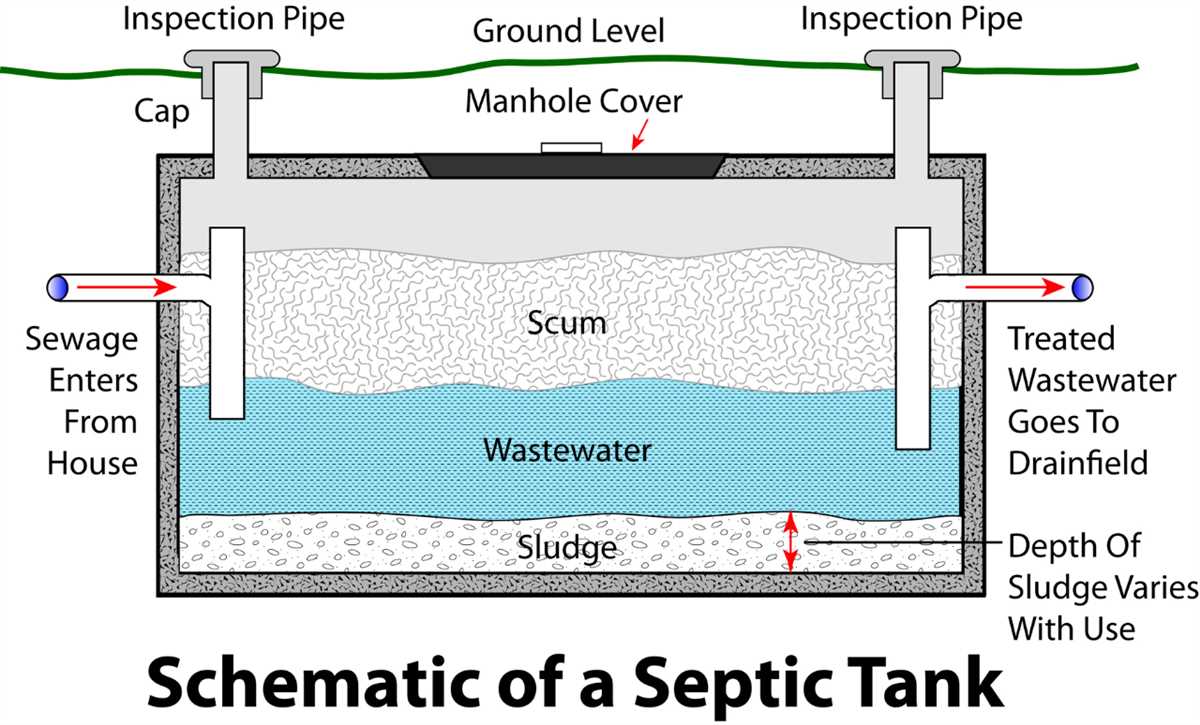
The drainfield, also called the leach field or absorption field, is the final destination for treated wastewater after it leaves the septic tank. It consists of a network of perforated pipes or trenches buried in the soil. The effluent is released into the drainfield, where it undergoes further treatment as it percolates through the soil. The soil acts as a natural filter, removing harmful bacteria, viruses, and other contaminants before the water reenters the groundwater or is absorbed by plant roots.
- Other possible components:
- Effluent Filter: Some septic tank systems have an effluent filter installed in the outlet pipe. It helps prevent solids from entering the drainfield, prolonging its lifespan and preventing clogs.
- Pump Chamber: In systems where the drainfield is located uphill or far from the septic tank, a pump chamber may be required. This chamber houses a pump that helps transport effluent from the tank to the drainfield.
Overall, a septic tank system is a self-contained wastewater treatment system that requires regular maintenance and care. Understanding the different components and their functions can help homeowners ensure the longevity and proper functioning of their septic system.
Working Principle of a Septic Tank
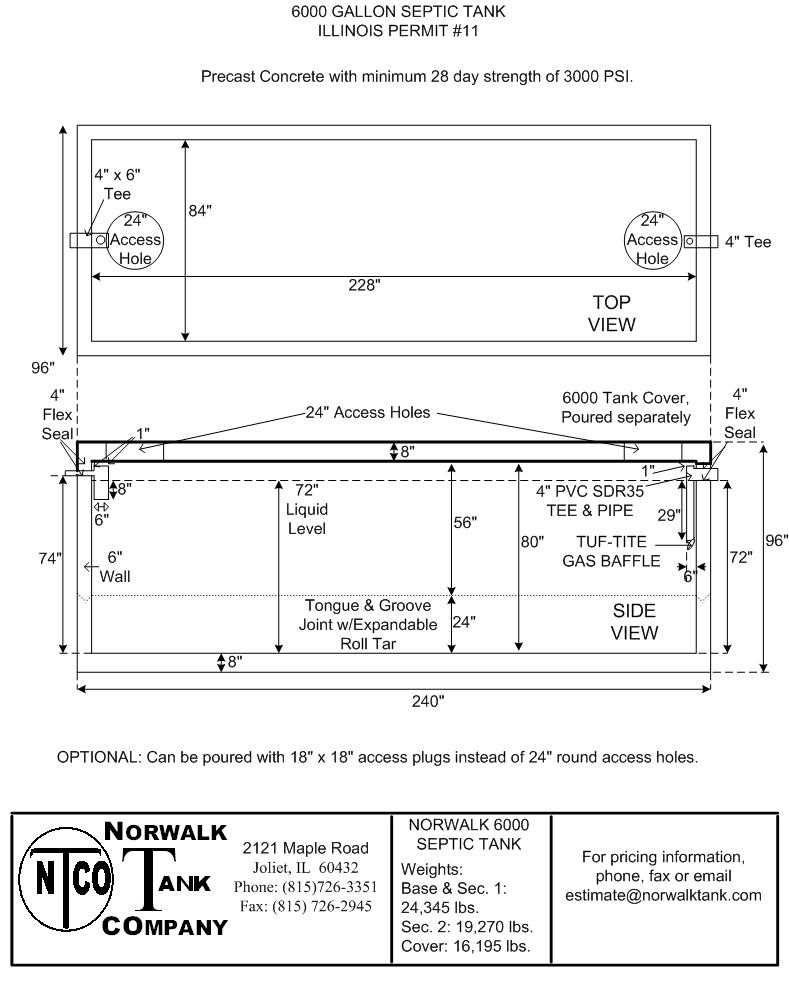
A septic tank is an underground container used for the treatment of household wastewater. It is an essential component of a septic system, which is commonly used in rural areas where centralized sewage systems are not available. The working principle of a septic tank involves several stages to ensure effective removal and treatment of wastewater.
Inlet Stage: The wastewater from the house enters the septic tank through an inlet pipe. The solid particles that are heavier than water settle at the bottom of the tank, forming a layer of sludge. Lighter particles, such as oil and grease, float to the surface, forming a layer of scum. The remaining liquid, known as effluent, occupies the middle zone.
Decomposition and Digestion Stage: As new wastewater enters the septic tank, the decomposition and digestion process begins. Bacteria and other microorganisms in the tank break down the solid waste components, converting them into liquids and gases. This decomposition process is essential for ensuring proper treatment of the wastewater.
Effluent Discharge: The treated effluent exits the septic tank through an outlet pipe. It then flows into the drainage field or leach field, where it is further treated and absorbed by the soil. The purpose of the drainage field is to disperse the effluent and allow it to filter through the soil, removing any remaining impurities.
Regular Maintenance: To ensure the proper functioning of a septic tank, regular maintenance is required. This includes periodic pumping of the sludge layer to prevent it from building up and clogging the tank. It is also essential to avoid flushing non-biodegradable materials, such as plastics and chemicals, as they can interfere with the natural decomposition process and damage the tank.
In conclusion, the working principle of a septic tank involves the separation of solid waste from wastewater, followed by the decomposition and digestion of the waste by bacteria and microorganisms. The treated effluent is then discharged into the drainage field for further filtration and absorption by the soil. Proper maintenance is crucial to ensure the efficient and effective operation of the septic tank system.
The Importance of Proper Septic Tank Maintenance
A septic tank is a crucial component of a wastewater treatment system. It is responsible for storing and treating the waste that comes from homes and businesses that are not connected to a centralized sewer system. Proper septic tank maintenance is essential to ensure its optimal functioning and to prevent costly repairs and environmental pollution.
Routine inspections and pumping are key aspects of septic tank maintenance. Regular inspections help identify any issues or potential problems early on, such as leaks, clogs, or damage to the tank. Pumping, on the other hand, involves removing the accumulated solids and scum from the tank. It is recommended to have the tank pumped every 3-5 years, depending on the size of the tank and the household’s usage.
Proper waste disposal is also vital for septic tank maintenance. Only biodegradable items should be flushed down the toilet or drained into the septic system. Non-biodegradable items such as grease, oils, diapers, feminine hygiene products, and chemicals can clog or damage the tank. Additionally, excessive water usage can overload the system and lead to failure.
Regular maintenance of the drain field is another important aspect of septic tank maintenance. The drain field is the area where the treated wastewater is distributed into the soil. It needs to be kept clear of obstructions and excessive moisture. Avoid parking vehicles or placing heavy structures on the drain field, as this can compress the soil and impede proper drainage.
Monitoring and addressing warning signs is crucial in septic tank maintenance. Foul odors, slow draining fixtures, gurgling sounds in the plumbing, or wet areas near the septic system are all potential signs of a problem. Ignoring these signs can lead to more severe issues, such as groundwater contamination or sewage backups into the home.
In conclusion, proper septic tank maintenance is essential to ensure the longevity and efficiency of the system. Regular inspections, pumping, proper waste disposal, maintenance of the drain field, and addressing warning signs are all crucial aspects of maintaining a functional septic tank. By practicing good maintenance habits, homeowners can prevent costly repairs and protect the environment from potential pollution.
Common Issues with Septic Tanks
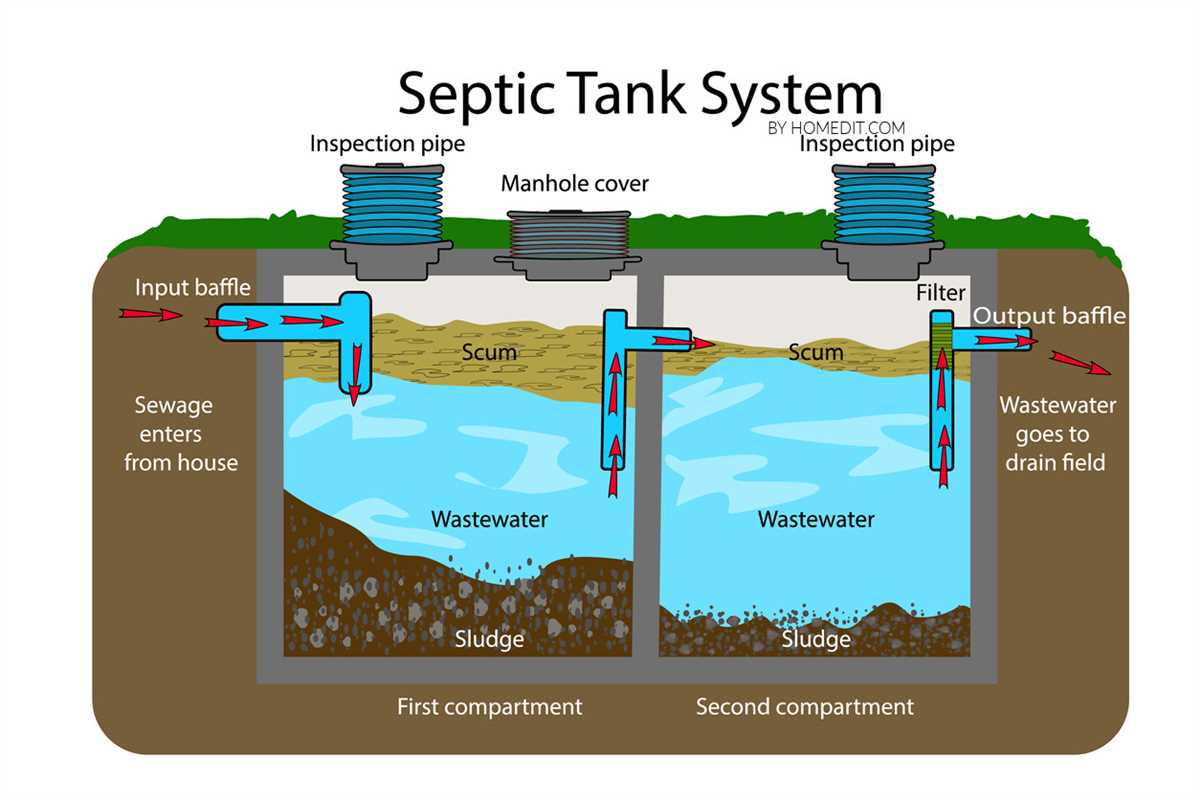
Septic tanks can experience several common issues that can negatively affect their function and cause problems for homeowners. It is important to address these issues promptly to prevent further damage and ensure the proper functioning of the septic system.
1. Clogging: One of the most common problems with septic tanks is clogging. This can occur when solid waste accumulates and blocks the pipes or when non-biodegradable items are flushed down the toilet or washed down the drain. Clogging can lead to sewage backups and unpleasant odors. Regular maintenance and proper disposal of waste can help prevent clogging.
2. Overflows: Another issue that septic tanks may encounter is overflow. This can happen when the tank gets too full and exceeds its capacity. Overflows can result in sewage backups in your home or yard, leading to significant damage and health hazards. Regular inspections and pumpings can help prevent overflows and ensure that the tank is operating at its optimal level.
3. Drain field problems: The drain field is a crucial component of the septic system that helps to filter and disperse the effluent into the soil. However, if the drain field becomes clogged or saturated, it can lead to the failure of the entire system. Signs of drain field problems include slow drainage, soggy areas in the yard, and foul odors. Regular inspections and maintenance can help identify and address drain field issues early on.
4. Tree root intrusion: In some cases, tree roots can infiltrate the septic tank and its pipes, causing blockages and damage. This can occur when trees are planted too close to the tank or when the roots grow in search of water and nutrients. Regular inspection and trimming of trees near the septic system can help prevent root intrusion.
5. Aging and deterioration: Septic tanks have a limited lifespan and can deteriorate over time. As the tank ages, it may develop cracks or leaks, leading to potential contamination of the soil and groundwater. Regular inspections and maintenance can help identify and address aging and deterioration issues before they worsen.
In conclusion, septic tanks can experience common issues such as clogging, overflows, drain field problems, tree root intrusion, and aging. Regular maintenance, proper waste disposal, and timely repairs can help prevent these problems and ensure the long-term functionality of the septic system.